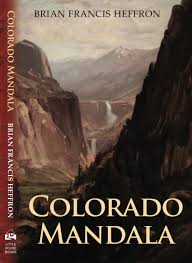Michael paused, his flinty eyes darting out at his listeners. Yes, they were ensnared—just the way he liked them. The power of his oratory filled him up. The corners of his mouth curled upwards, and he bared his perfect teeth into a smile he knew his listeners would find intoxicating.
“… He was aaaalways cold,” Michael drawled, letting the word lounge in his mouth a bit, “but the land of gold seemed to hold him like a spell;
Though he’d often say in his homely way that he’d sooner live in hell.
… And that very night, as we lay packed tight in our robes beneath the snow, And the dogs were fed, and the stars o’erhead were dancing heel and toe, He turned to me, and Cap, says he, I’ll cash it in this trip, I guess;
And if I do, I’m asking that you won’t refuse my last request.”
Michael stopped and drained his whiskey glass. Every pair of eyes in that bar bored into him. The women—breathing hard, visibly—and the men, too, were transfixed. Michael took all this in, and then continued.
“Well, he seemed so low that I couldn’t say no; then he says with a sort of moan:
It’s the cursed cold, and it’s got right hold till I’m chilled clean through to the bone.
Yet ‘taint being dead—it’s my awful dread of the icy grave that pains;
So I want you to swear that, foul or fair, you’ll cremate my last remains.”
A brief scuffle in the far corner of the bar brought Michael’s gaze upward again for a beat. Shadows and light and whiskey tangoed together in his mind for a moment. An old scene seemed to flash there as well. But Michael blinked back the memory, whatever it was; no, not now. He shook it off and continued:
“A pal’s last need is a thing to heed, so I swore I would not fail;
And we started on at the streak of dawn; but God! he looked ghastly pale.
He crouched on the sleigh, and he raved all day of his home in Tennessee;
And before nightfall a corpse was all that was left of Sam McGee.”
Breathing in the bar had seemingly ceased completely. His audience was all one body, one ear, and one eye. All upon Michael Boyd Atman.
“There wasn’t a breath in that land of death, and I hurried, horror-driven, With a corpse half hid that I couldn’t get rid, because of a promise given;
… Now a promise made is a debt unpaid, and the trail has its own stern code.
In the days to come, though my lips were numb, in my heart how I cursed that load.
In the long, long night, by the lone firelight, while the huskies, round in a ring, Howled out their woes to the homeless snows—O God! how I loathed that thing.”
Michael’s voice now softened. Something snuck into it that hadn’t asked permission, and remained. What was it? His audience saw their performer naked before them and this engaged them even more.
“… Till I came to the marge of Lake Lebarge, and a derelict there lay;
It was jammed in the ice, but I saw in a trice it was called the “Alice May.”
And I looked at it, and I thought a bit, and I looked at my frozen chum;
Then “Here,” said I, with a sudden cry, “is my cre-ma-tor-eum.”
Some planks I tore from the cabin floor, and I lit the boiler fire;
Some coal I found that was lying around, and I heaped the fuel higher;
The flames just soared and the furnace roared—such a blaze you seldom see;
Then I burrowed a hole in the glowing coal, and I stuffed in Sam McGee.”
Here Michael stopped again. Had that old memory returned…the one he had tried to push away earlier? Tears welled in his eyes and he felt sheepish, almost frightened, but then—he realized he didn’t care. He let it come and the tears fell.

Buy Now @ Amazon
Genre – Literary Fiction
Rating – PG
More details about the author & the book
Connect with Brian Heffron on Facebook & Twitter
Website http://www.brianheffron.net/brianheffron.net/Welcome.html



